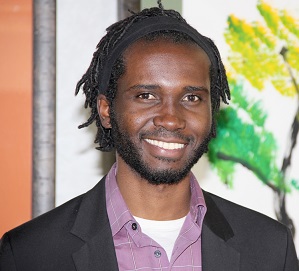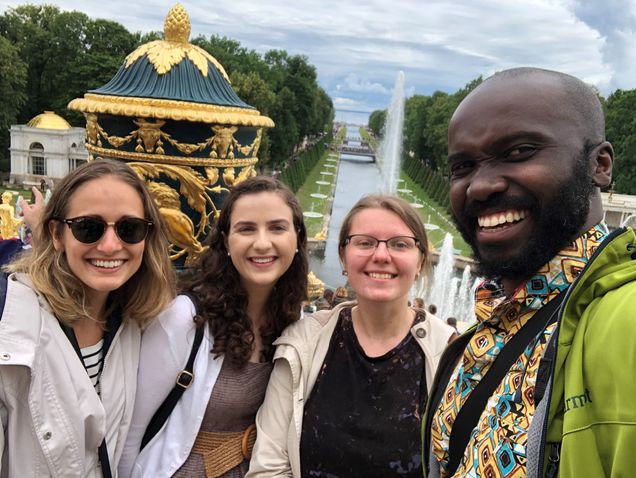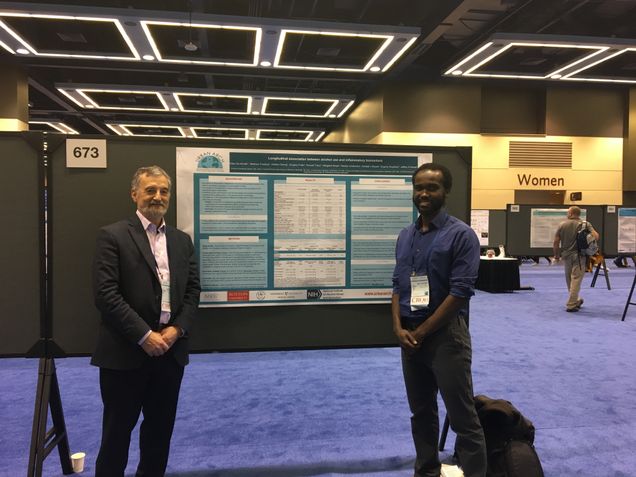Spotlight on… Kaku So-Armah
 Kaku So-Armah, PhD, Assistant Professor of Medicine, Boston University School of Medicine. As told to URBAN ARCH Admin Core staff, June 2021
Kaku So-Armah, PhD, Assistant Professor of Medicine, Boston University School of Medicine. As told to URBAN ARCH Admin Core staff, June 2021
Tell us more about your academic and research background. What led you to focus your training in epidemiology on co-morbid diseases and immunologic alterations in HIV-related CVD risk?
I came to HIV specifically and the intersection of HIV and cardiovascular disease because I wanted to do work that was relevant in both Ghana, where I am from, and the U.S. It turned out at the University of Pittsburgh there was a group that was exactly studying the intersection of HIV and cardiovascular disease. I met Matt Freiberg at the University of Pittsburgh, and it is where I was introduced to the Veterans Aging Cohort Study (VACS) team led by Amy Justice. University of Pittsburgh was really what set me on the path of thinking about HIV and cardiovascular disease.
As part of my graduate work, I ended up working on a paper with Jeffrey Samet using some data from the HIV LIVE study. During this time, I was really interested in how immune dysfunction in people with HIV may be driving the risk of cardiovascular disease and other diseases of aging. When I graduated, my partner Cynthia matched to a residency in Boston, so I was the traveling spouse. With help from Matt and Jeffrey, I was able to complete a post-doc at Yale with Amy Justice and VACS and still live in Boston.
I previously thought of alcohol as something you adjust for when examining associations between HIV and cardiovascular disease, HIV and liver disease, or HIV and diabetes. Sitting in on some of the URBAN ARCH calls gave me an opportunity to think more deeply about alcohol and substance use as mechanisms contributing to the diseases I was studying. So now I define my research interest as trying to understand the intersection of HIV, diseases of aging, particularly cardiovascular disease, and substance use.
What other projects are you currently working on?
One project is IDEAAA (Inclusion, Diversity, and Equity in Addiction medicine, Allied health professions related to addiction, and Addiction research), an initiative funded by Boston Medical Center to increase diversity, equity and inclusion within the field of addiction which I am fortunate to be leading. We are trying to increase the diversity of people researching substance use across multiple fields (e.g., medicine, nursing, psychiatry, psychology, social work) at multiple levels, from high school to junior faculty. It’s a project that I am really excited about.
I am also finishing up my K01, which is focused on the role that liver injury may have in driving HIV-related cardiovascular disease.
How did you first get involved with URBAN ARCH?

As I mentioned before, I met Jeffrey during graduate school and am really thankful he gave me the opportunity to work on the HIV LIVE paper, but also gave me the opportunity to sit in on meetings. Those meetings allowed me to define a research question using URBAN ARCH data that was funded through a research supplement. That was my “in”, and with that I became more and more part of the URBAN ARCH consortium, which opened up new opportunities.
I mentioned that I was a post-doc at Yale but living in Boston. This was all clearly pre-COVID but I have mentors – including Matt, Jeffrey, and Amy Justice – who trusted me enough to allow me to work remotely at various sites. That model has been really effective for me because I was able to tap into resources that are not where I sit. VACS is in Connecticut and Matt is now is Nashville. With these resources I can jump between and excite different parts of my brain by having projects that are all a little different from each other.
What is your key advice to junior investigators or trainees who are just launching their research careers?

Find the right mentor(s). Unfortunately, I don’t know that there’s an easy way to do that. I was fortunate in that the first mentor I got matched up with was Matt, and the relationship was, has been, and continues to be good. I am fortunate to have the same thing with Jeffrey and Amy. It could have just as easily been a more neutral relationship that would require much more work for a lot less benefit, and that’s okay too. The key part is identifying what it is you need from a mentor and making sure the mentor can provide it. If they can, that’s great, that’s a relationship you nurture. If they can’t provide what you need, I hope that there is enough maturity on both sides to recognize that and maybe the mentor can help you find someone who will be more suitable and then you graduate to a different mentoring relationship.
For PhDs success depends on the people around them, who help train them, and who provide them with resources and sponsorship. There are multiple ways to find a mentor. Sometimes you just ask. Sometimes you are write a paper with a person and recognize that this person brings something to the table that you are lacking, so you try to pull them in. The latter involves a lot more active work on the mentees’ part. None of that is taught very well during PhD programs. On the flip side, as I become faculty and begin having my own mentees, I’m also recognizing that mentor training is incredibly important. As part of IDEAAA, we’re thinking of ways to make sure that mentors are also ready to receive and most appropriately mentor people from a variety of backgrounds.
Tell us one thing about yourself that readers might find surprising.
I love rearranging my house. It drives my wife mad. Every couple of months I will flip everything upside down, even put things up on walls that shouldn’t be up on walls. My kids love it! They come home and are like “what happened, when did that get there?”. I think I am a bit of an interior designer focusing on aesthetics and increasing functionality.